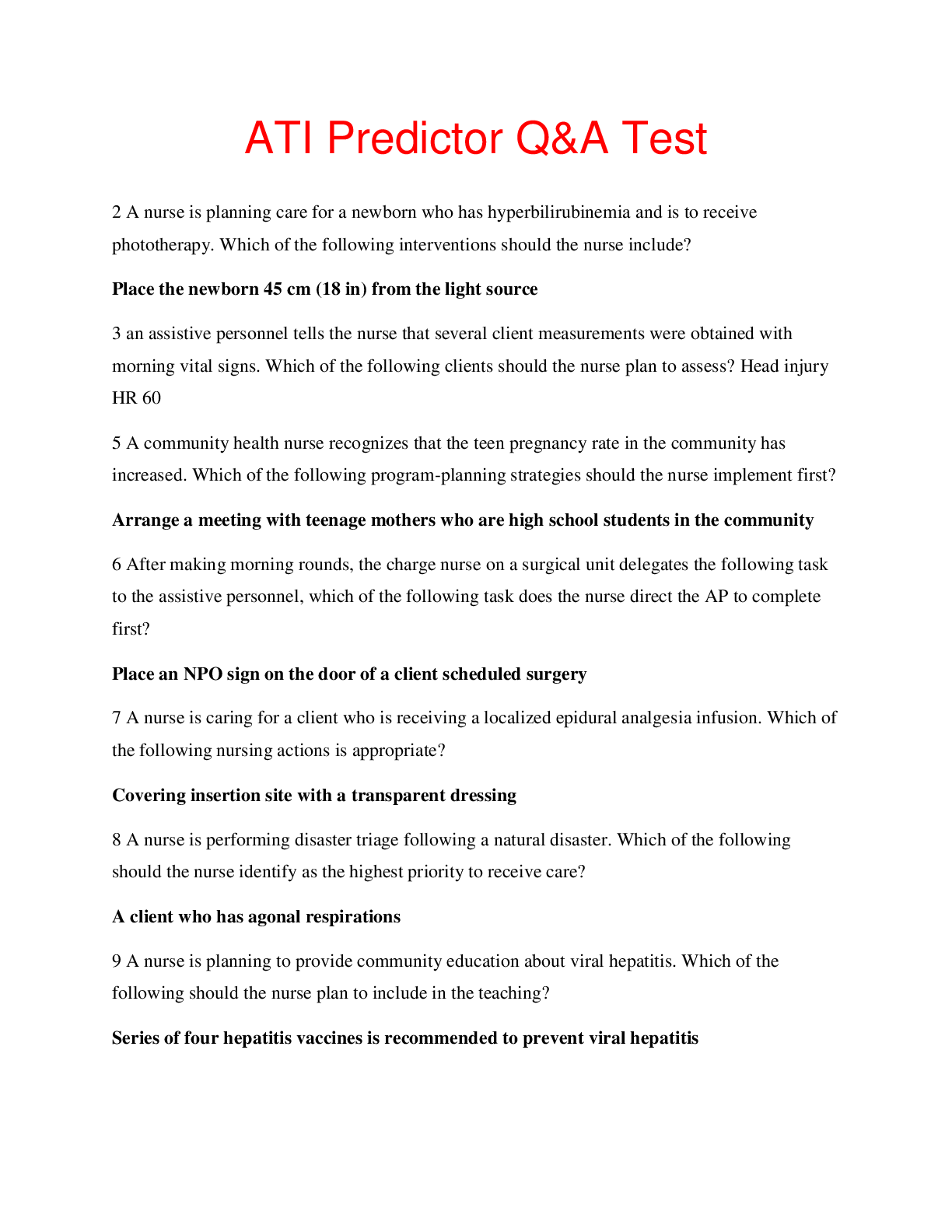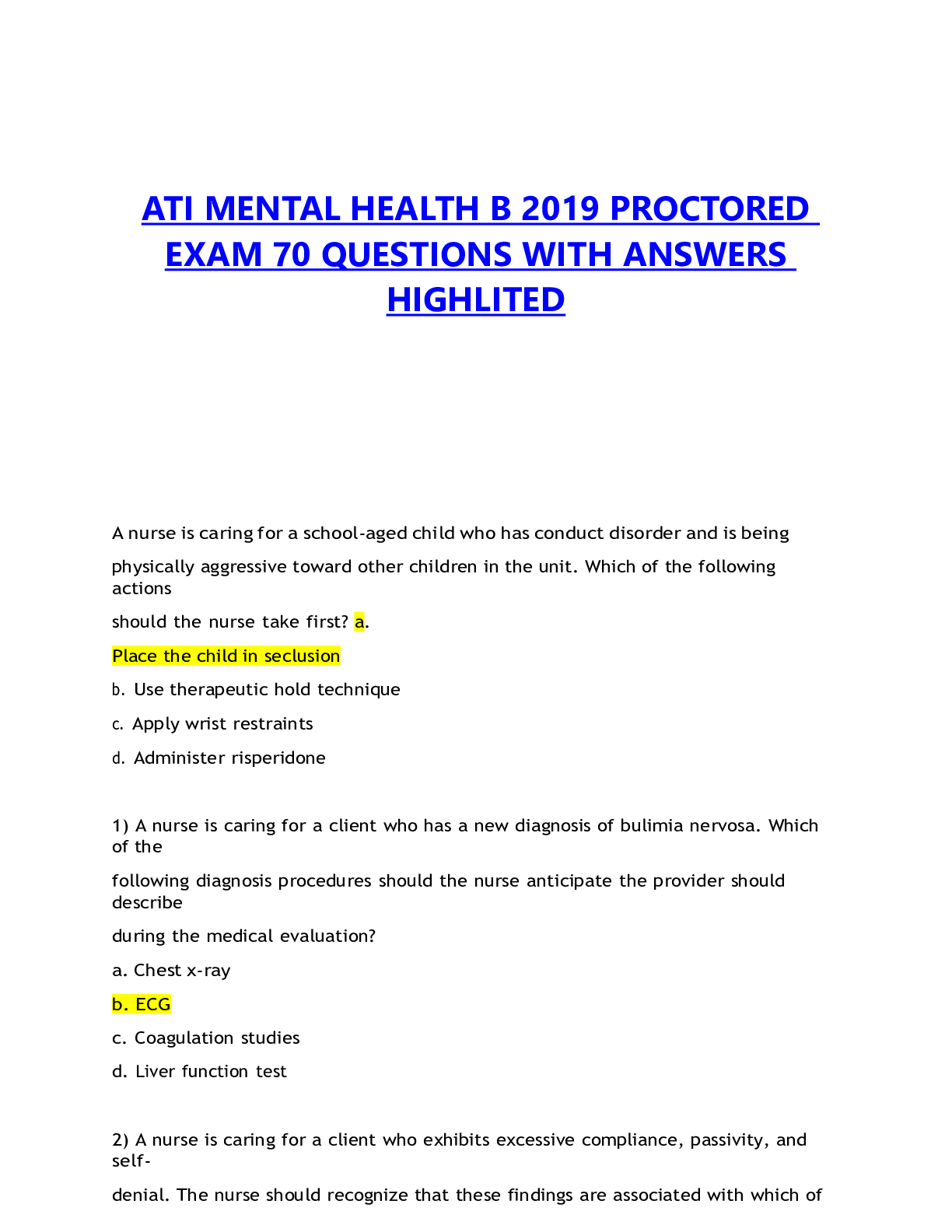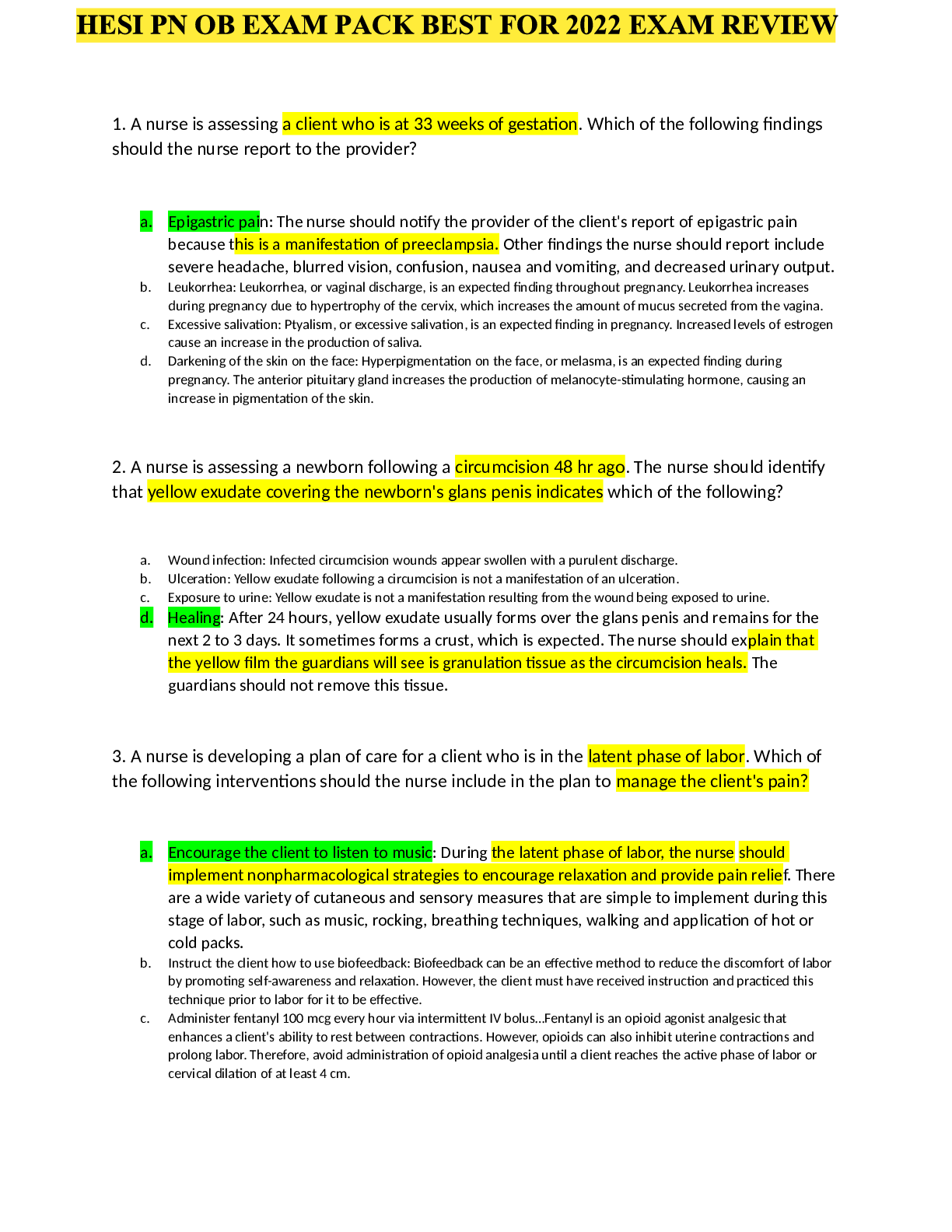ATI TEAS 7 Exam Test Bank - 300 Questions with Answers (All Sections)
Document Content and Description Below
ATI TEAS 7 Exam Test Bank - 300 Questions with Answers (All Sections) 1. How are carbohydrates used by the body? Choose ALL answers that apply. • structure • Communication • storage • Recogni... tion 2. What type of immunity does a vaccine provide? Choose only ONE best answer. • naturally acquired passive immunity • Artificially acquired passive immunity • Naturally acquired active immunity • Artificially acquired active immunity 3. Which organs and/or glands are superior to the liver? Choose ALL answers that apply. • Lungs • Parathyroid gland • Kidneys • Thymus 4. Which cavity contains all of the frontal cavities? Choose only ONE best answer. • Dorsal • Thoracic • Abdominopelvic • Ventral 5. Which of the following carry oxygenated blood? Choose ALL answers that apply. • Pulmonary artery • Pulmonary vein • Aorta • Superior vena cava 6. Which of the following are disaccharides? Choose ALL answers that apply. • Sucrose • Glucose • Cellulose • Lactose 7. Which body system is responsible for the transport of dissolved oxygen from the lungs to the spleen? • Immune • Endocrine • Respiratory • Cardiovascular 8. Which condition can lead to blood clots and stroke? • Aneurysm • Arrhythmia • Asthma • Hypertension 9. A botanist wants to determine if environmental temperature affects root growth. In her experiment, she creates 4 rooms at temperatures that vary by 5 degrees F. Each room gets 20 seedlings of the same species, which she grows on agar plates for 60 days. Once a day, she measures the length of each seedling's root. At the end of 60 days, she compares the length of the roots with the room temperature. She finds the room with the lowest temperature produced the longest roots. What is the independent variable in this study? • Temperature • Seedlings • Light • Root length 10. Which of the following can act as enzymes in the body? • Globular proteins • Lipase • Amylase • Glucagon 11. Which of the following is the carbohydrate monomer? • Disaccharide • Lactose • Monosaccharide • Thymine 12. Which of the following are true about water? • Water has polar covalent bonds. • Water has a neutral pH of 7. • Water has a low specific heat capacity. • Water as a solid is less dense than water as a liquid. 13. Hydrophobic proteins often provide which function in the body? • Digestive enzymes • Provide structure • Carry oxygen molecules • Store energy 14. Which of the following have a smaller genetic scale than a chromosome? • Genome • Gene • DNA • All of the above 15. What best measures the volume of a solid? • Triple beam balance • Measuring wheel and mathematical formula • Graduated cylinder • Measuring wheel 16. What cavities are in the ventral cavity of the human body? • Thoracic Cavity • Abdominal Cavity • Cranial Cavity • Pelvic Cavity 17. Which is the largest part of the airway? • Alveoli • Bronchi • Bronchioles • Trachea 18. Which of the following is an effect of high blood pressure? • Smoking • Excessive dietary salt • Renal vessel damage • Older age 19. What is the monomer for nucleic acids? • Nucleotide • Amino acid • Phosphate group • Ribosome 20. Consider the graph which represents a botanist's data of root growth. What is the independent variable? • Temperature • Root tissue • Light exposure • Root length 21. What type of tissue protects the respiratory system's trachea? • Bone • Cartilage • Collagen • Keratin 22. Which of the following are examples of covalent bonds? • H₂O • NaCl • C₆H₁₂O₆ • MgO • 23. Which of the following is an example of Mendelian inheritance? • Incomplete Dominance • Polygenic Alleles • Combination Inheritance • Recessive Inheritance 24. Which of the following are globular proteins? • Antibody • Enzyme • Hemoglobin • Keratin 25. What type of bond connects amino acids? • Covalent • Peptide • Ionic • Hydrogen 26. What is the name for a microorganism that lives on or in the human body and normally causes no disease or harm? • Bacteria • Commensal Microorganism • Microorganism • Host 27. of the following infectious diseases can be caused by a viral infection? • COVID-19 • Varicella • Mumps • Measles 28. You are a nursing student and are triaging a patient. Which of the following is an example of quantitative data you can gather? • The patients say he feels pain. • The patient says he has stabbing pain in his right lower abdomen. • The patient's temperature is 101.7 degrees F. • The patient reports that he had a fever yesterday 29. Which of the following are examples of steroids in the human body? • Cholesterol • Testosterone • Cortisol • Estradiol 30. What of the following factors influence the rate of a chemical reaction? • Temperature • Pressure • Concentration of reactants and substrate • Any catalysts 31. Which of the following infectious diseases can be caused by bacteria? • Tuberculosis • Cholera • Varicella • Influenza 32. During which of the following stages does crossing over occur? • Mitosis Prophase • Meiosis Prophase I • Meiosis Prophase II • Interphase 33. Which of the following is correct based on anatomical terms? • The shoulder joint is proximal to the neck. • The elbow joint is superior to the shoulder. • The thoracic vertebrae are superior to the cervical vertebrae. • The thumb is on the lateral aspect of the hand. 34. Which of the following is a genetic condition that affects the respiratory system? • Asthma • Cystic fibrosis • Mycosis • Surfactant Deficiency 35. A particular atom is uncharged, and it has an electron configuration of 1s2 2s2 2p⁶ 3s2 and a mass number of 14. How many protons does it have? • 14 • 6 • 8 • 12 36. Which of the following describes the term allele? • A base-pair substitution in DNA • An inheritable variation of a gene • A grouping of various genes • Variations of complementary base pairs 37. Which of the following is part of the cardiovascular system? • Blood vessels • Brain • Kidneys • Lungs 38. Which of the following are possible effects of obesity? • Reduced exercise • Joint and body pain • Hypertension • Diabetes 39. Which of the following factors does not strengthen a scientific argument? • Lack of bias. • Extensive use of qualitative research and data. • Able to be reproduced and repeated by others. • Withstands the test of time 40. Which of the following are functions of the kidneys? • Make urine and maintain water homeostasis • Help maintain blood pressure • Synthesize Vitamin D • Filter blood of salt, nutrients, water, and waste 41. Which of the following correctly orders the layers of the epidermis from most superficial to deepest? • S. spinosa, S. Basale, S. corneum, S. granulosum, S. lucidum • S. corneum, S. lucidum, S. granulosum, S. spinosum, S. Basale • S. corneum, S. spinosum, S. Basale, S. granulosum, S. lucidum • S. Basale, S. spinosum, S. granulosum, S. lucidum, S. corneum 42. What of the following statements is true about an allergic reaction? • An allergic reaction, like hives or wheezing breath, is the result of overactive body systems like the integumentary system and respiratory system. • An allergic reaction is a function of overactive B-cells in the body, which release various immunoglobulins. • An allergic reaction is a function of overactive mast cells in the body, which are stimulated by Immunoglobulin E. • An allergic reaction involves proteins like histamine, keratin and collagen. 43. Alkali metals are in which group of the periodic table? • Group 1 • Group 2 • Group 7 • Group 8 44. Which term refers to a molecule of DNA and structural protein? • Lysosome • Centrosome • Chromosome • Genome 45. If Silicon (Si) has an atomic mass of 28.1 AMU (atomic mass units), which of the following is the most likely number of neutrons an atom of Silicon would have? • 28.1 • 14 • 28 • 14.2 46. Which neuromuscular system controls voluntary movement? • Autonomic • Somatic • Sympathetic • Parasympathetic 47. Which of the following is another name for a sweat gland? • Ceruminous • Sebaceous • Sudoriferous • Integumeous 48. Which of the following is another name for the voice box? • Alveoli • Larynx • Trachea • Pharynx 49. Which term refers to the relaxation of heart muscle? • Diastole • Systole • Asystole • Cardiastole 50. What is located in the skin's dermis? • Blood vessels • Nerve endings • Collagen • Melanocytes 51. Fat is primarily digested in the , and protein is primarily digested in the . • mouth; stomach • stomach; small intestine • small intestine; small intestine • small intestine; stomach 52. Which [Show More]
Last updated: 1 year ago
Preview 1 out of 104 pages
Instant download
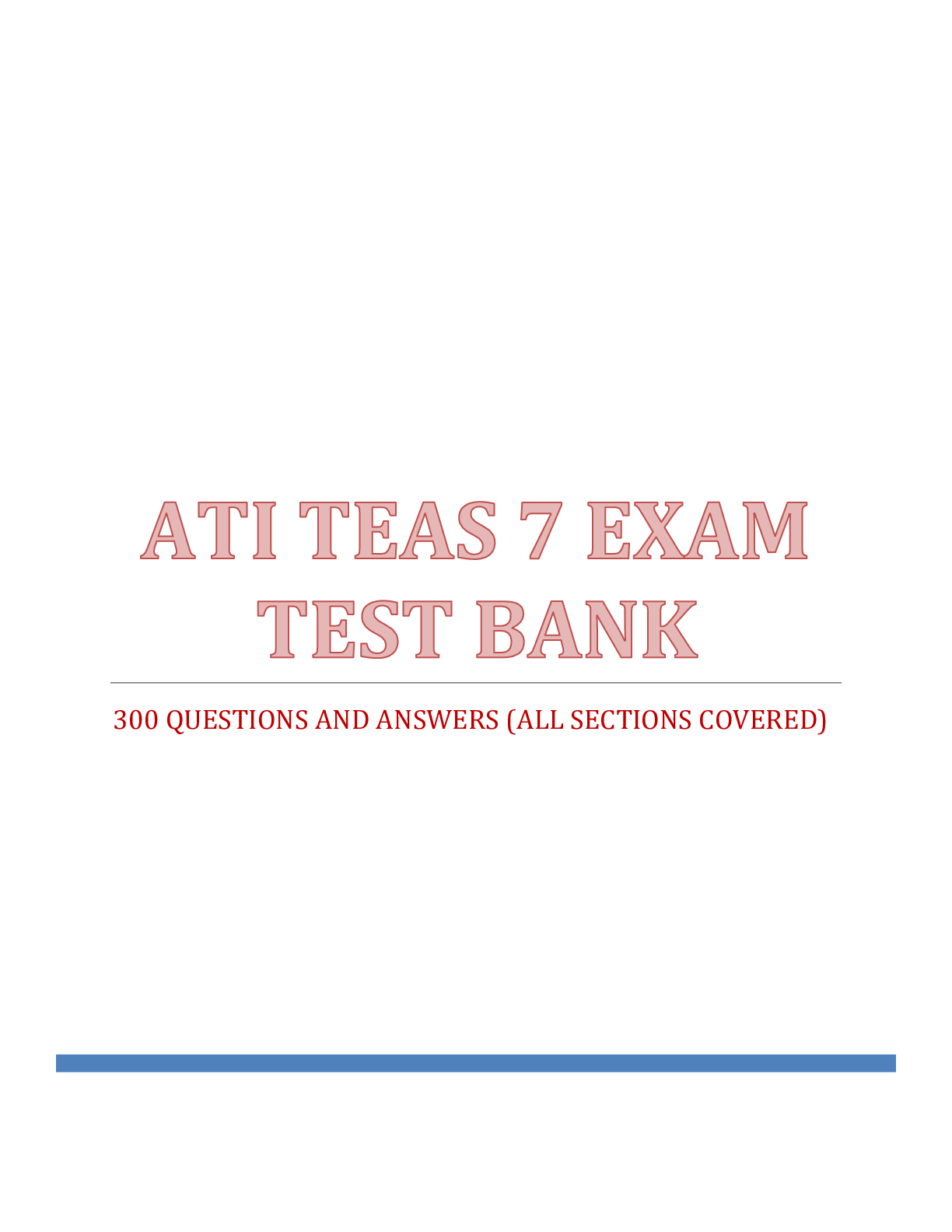
Instant download
Reviews( 0 )
Document information
Connected school, study & course
About the document
Uploaded On
Nov 26, 2022
Number of pages
104
Written in
Additional information
This document has been written for:
Uploaded
Nov 26, 2022
Downloads
0
Views
57

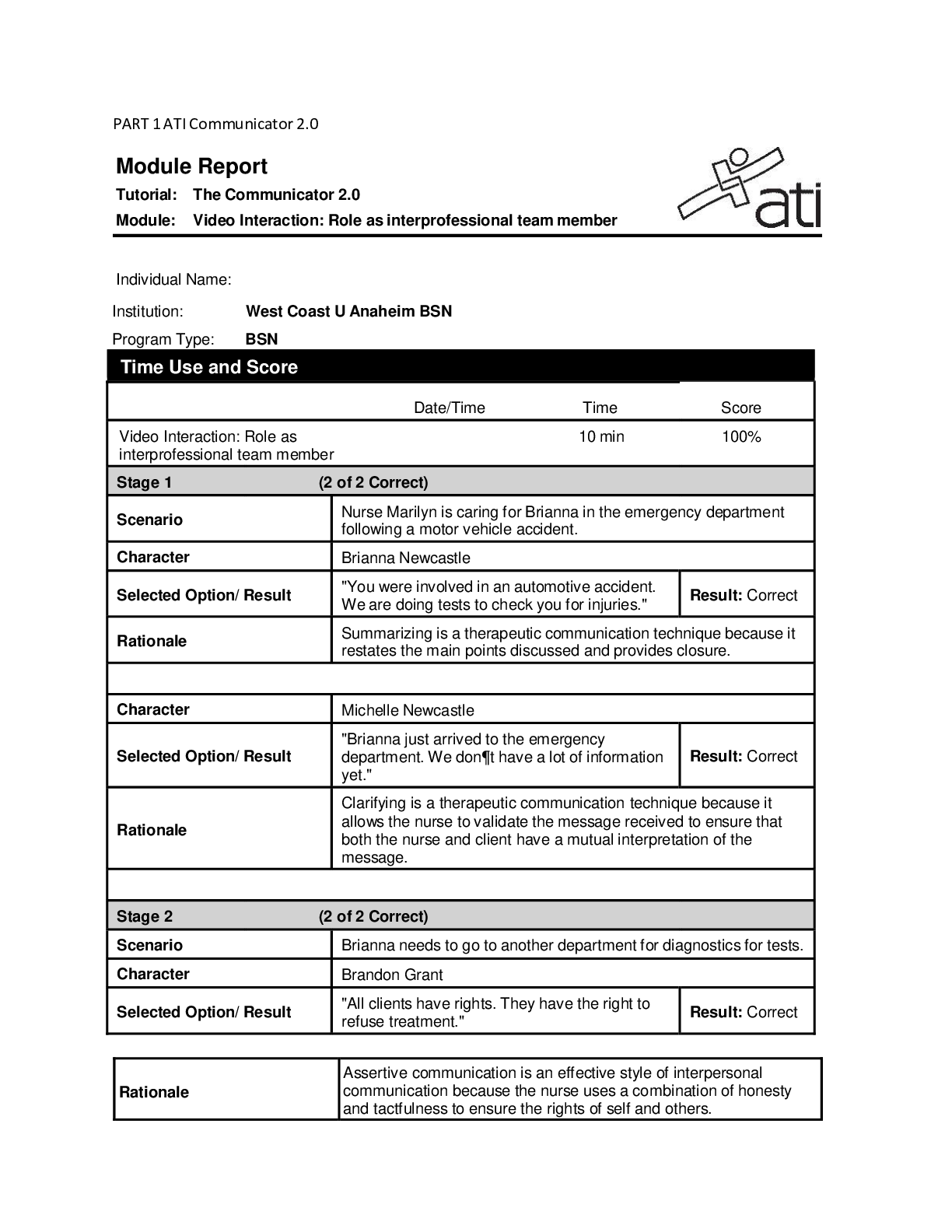


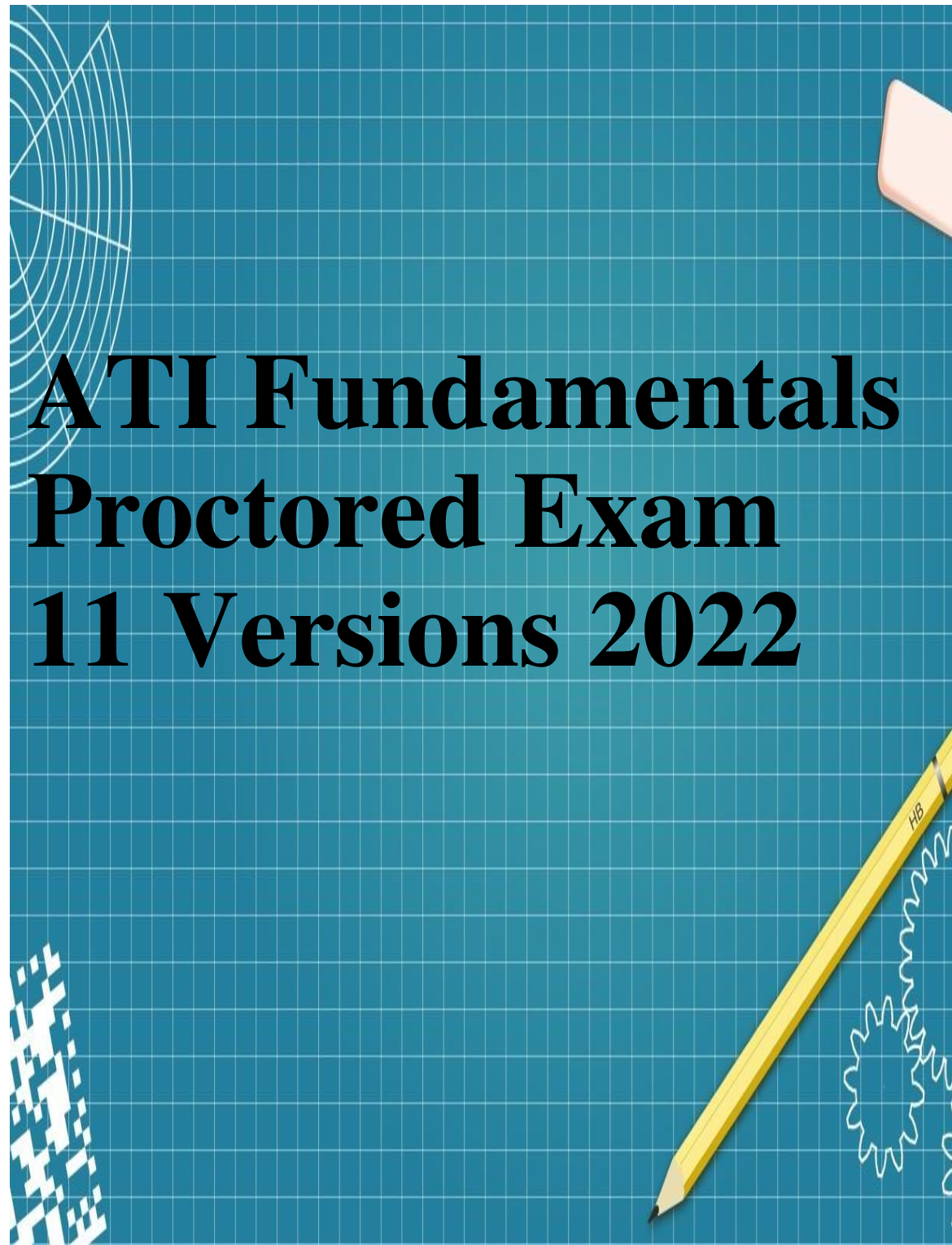

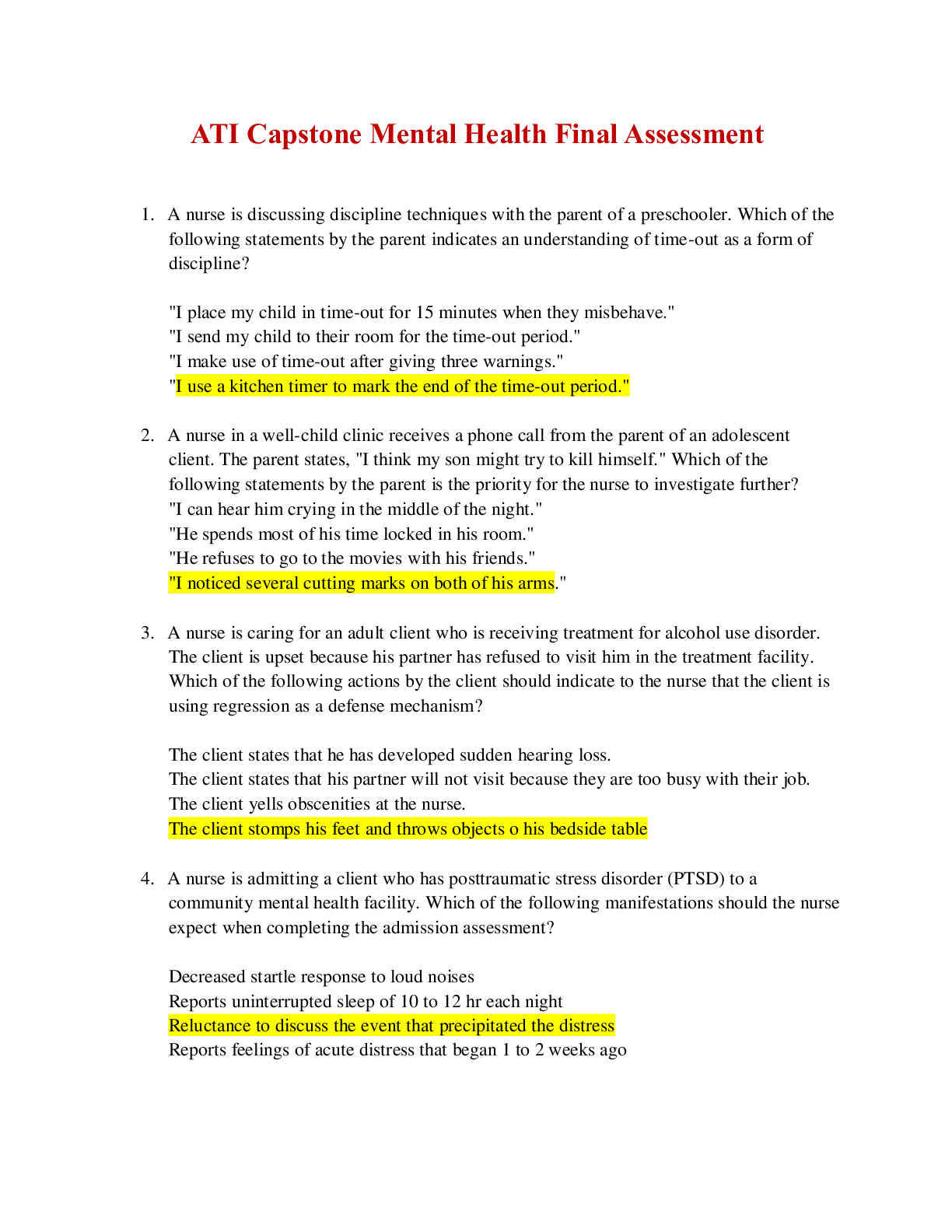

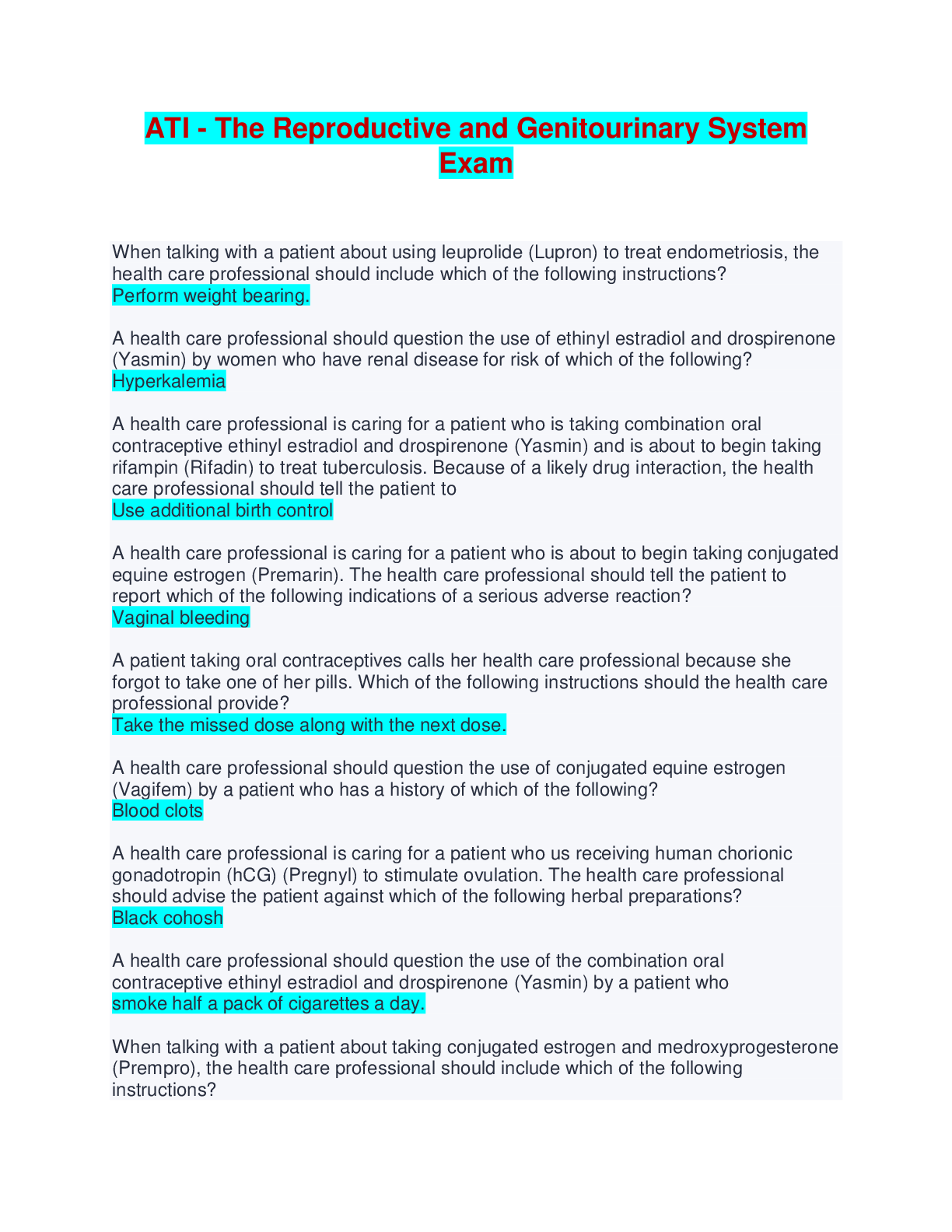



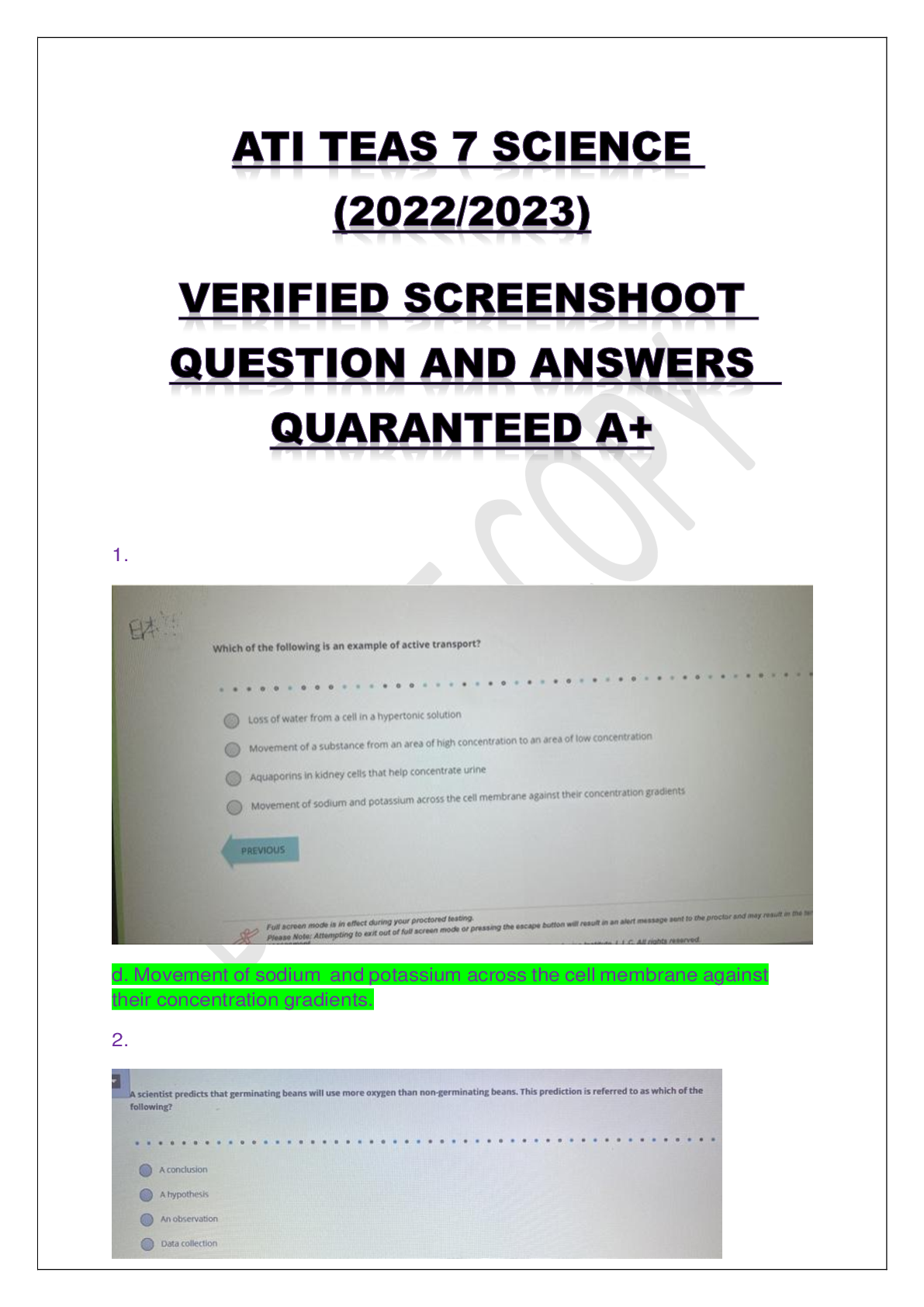
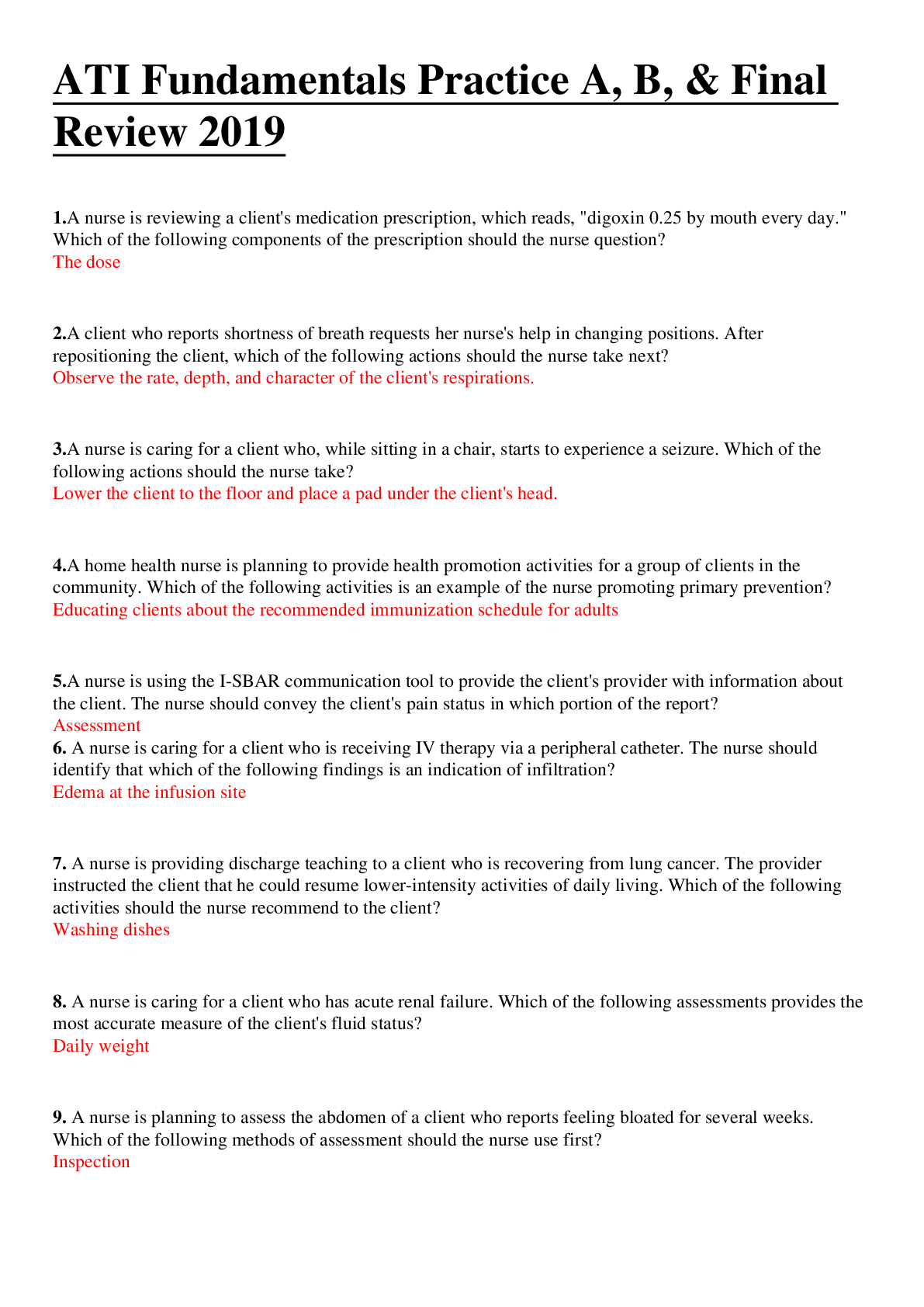


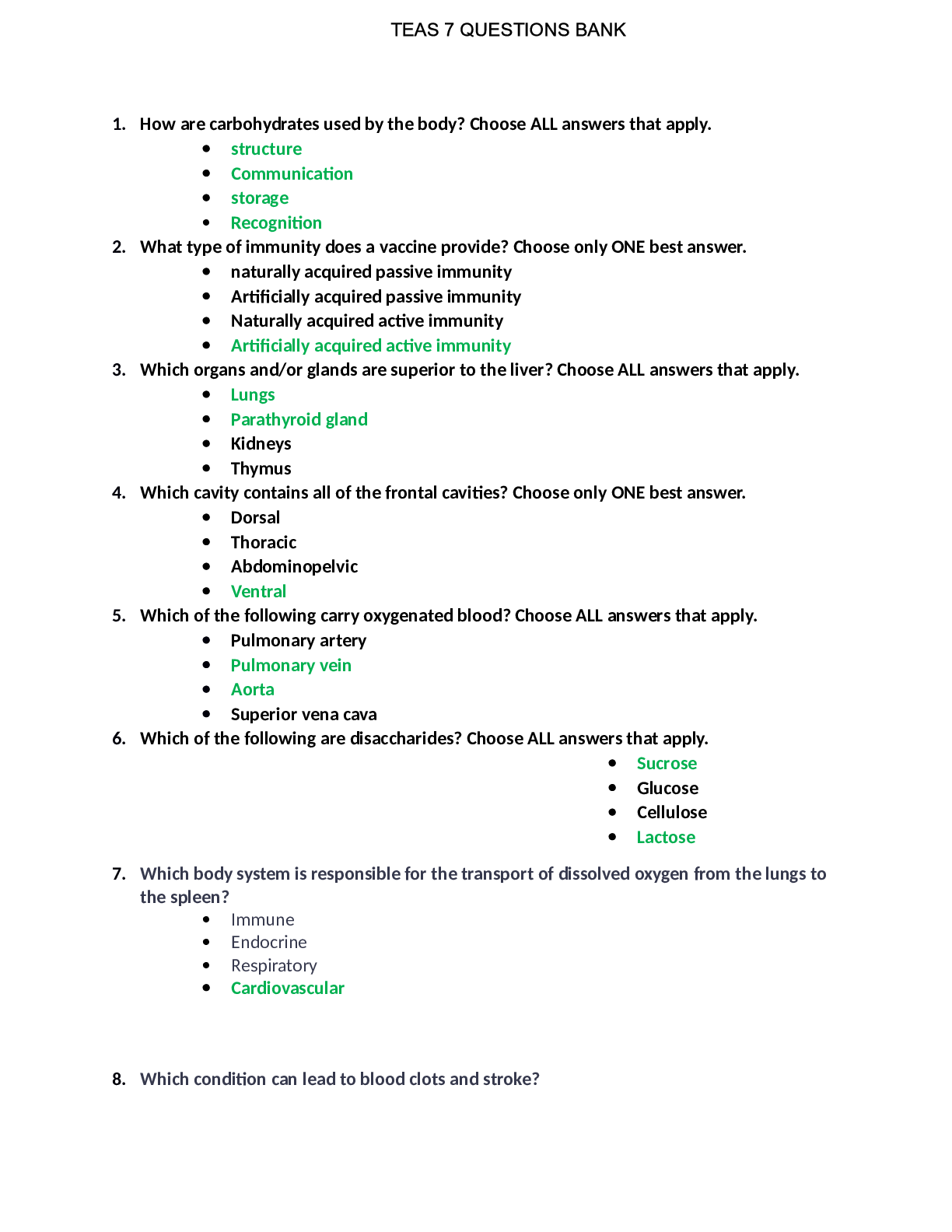

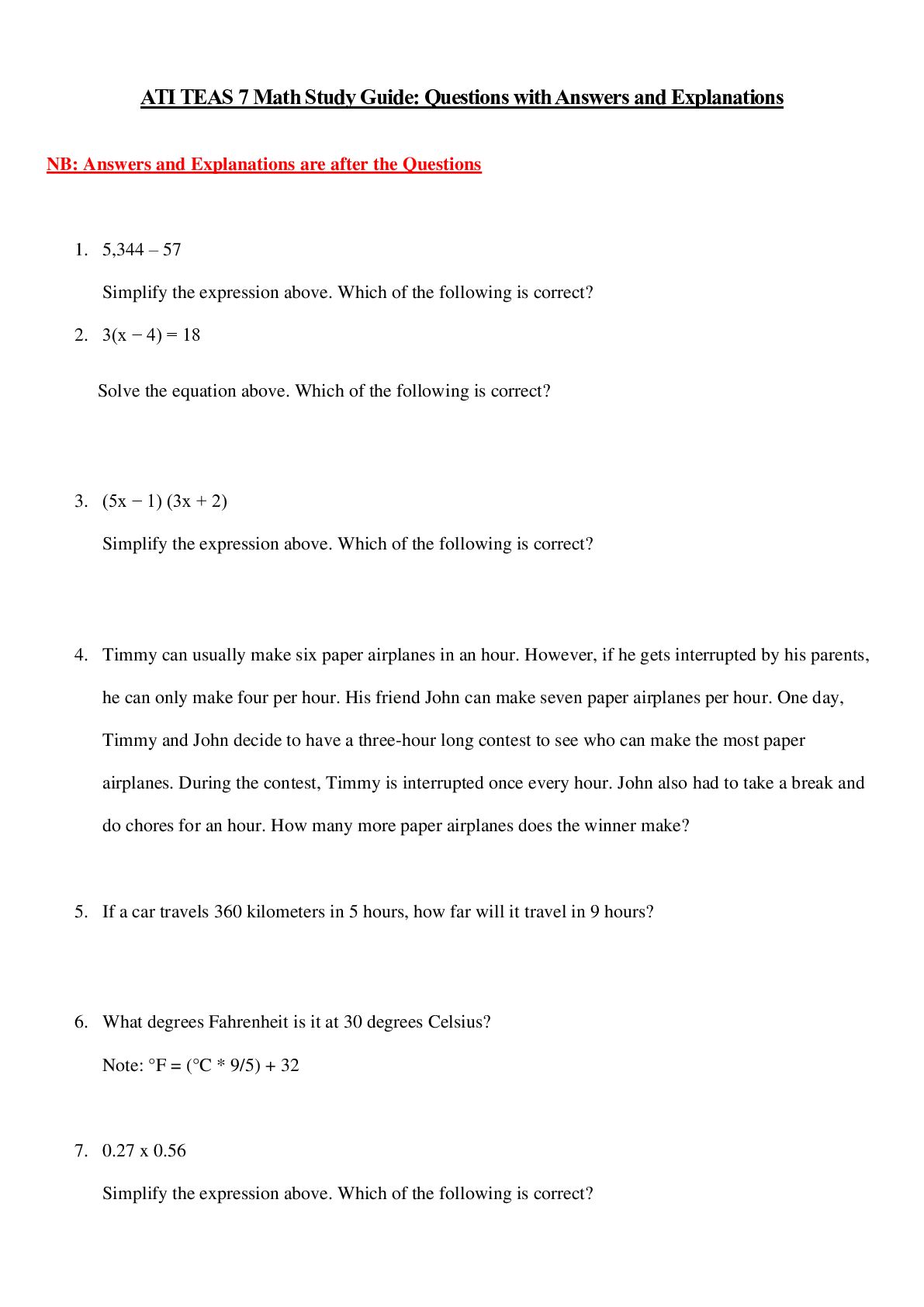

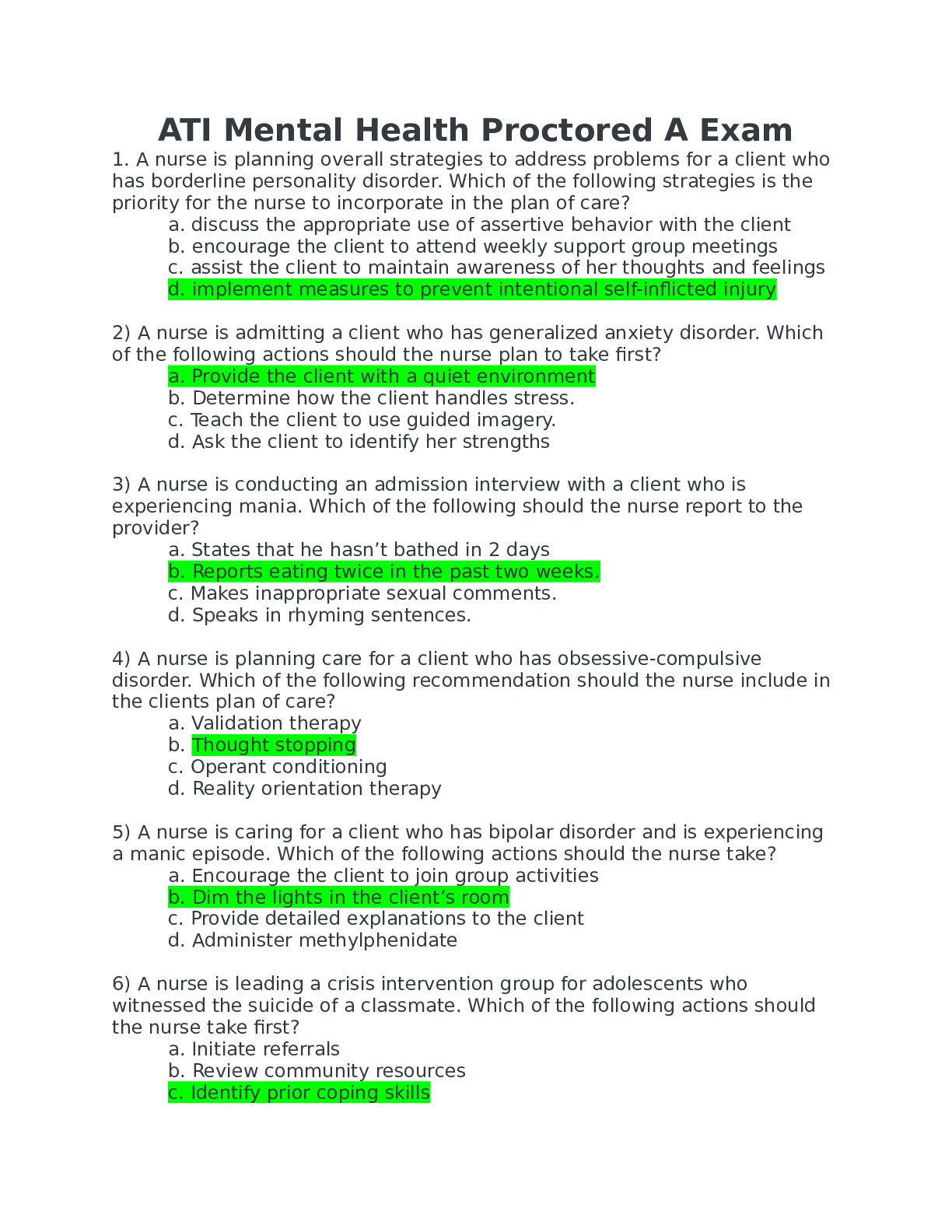
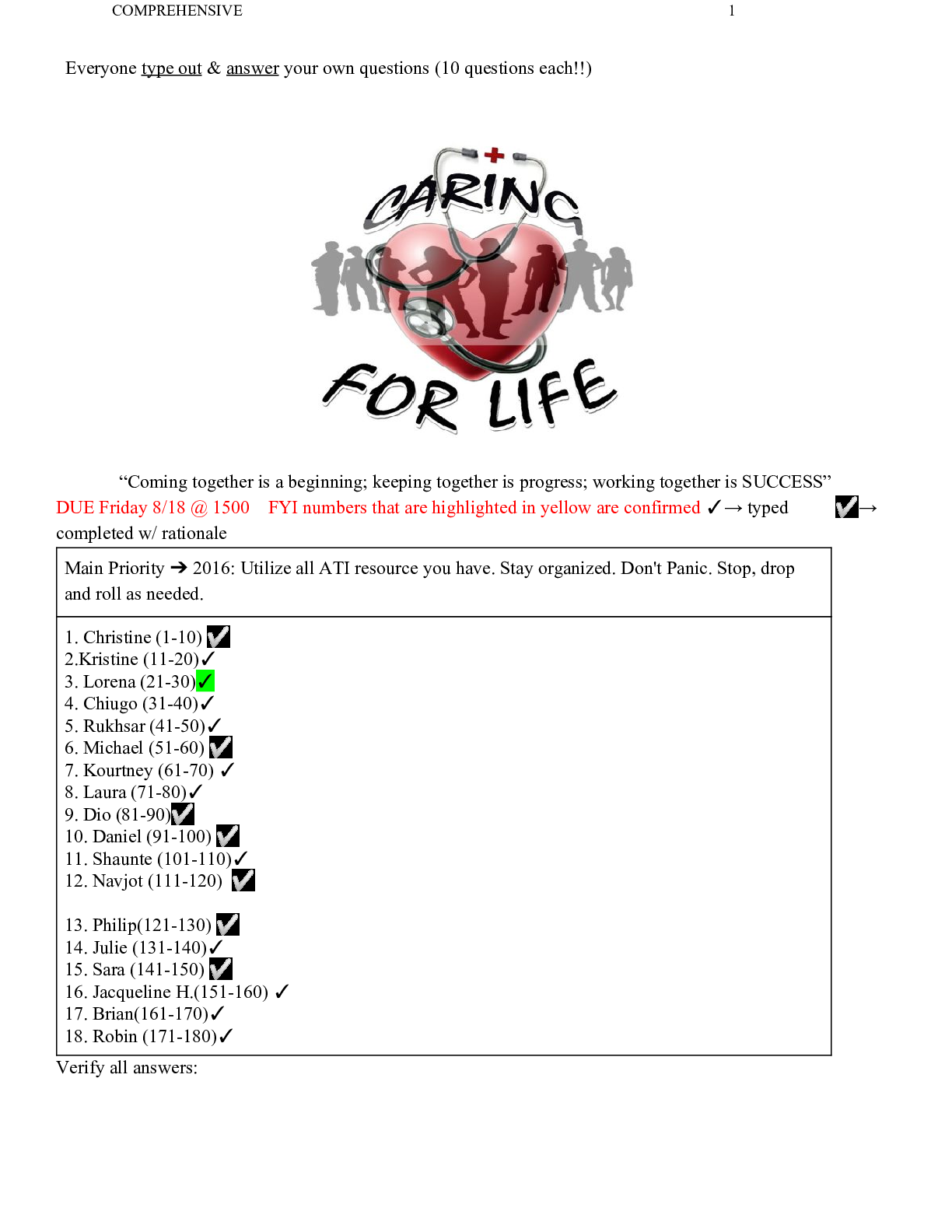
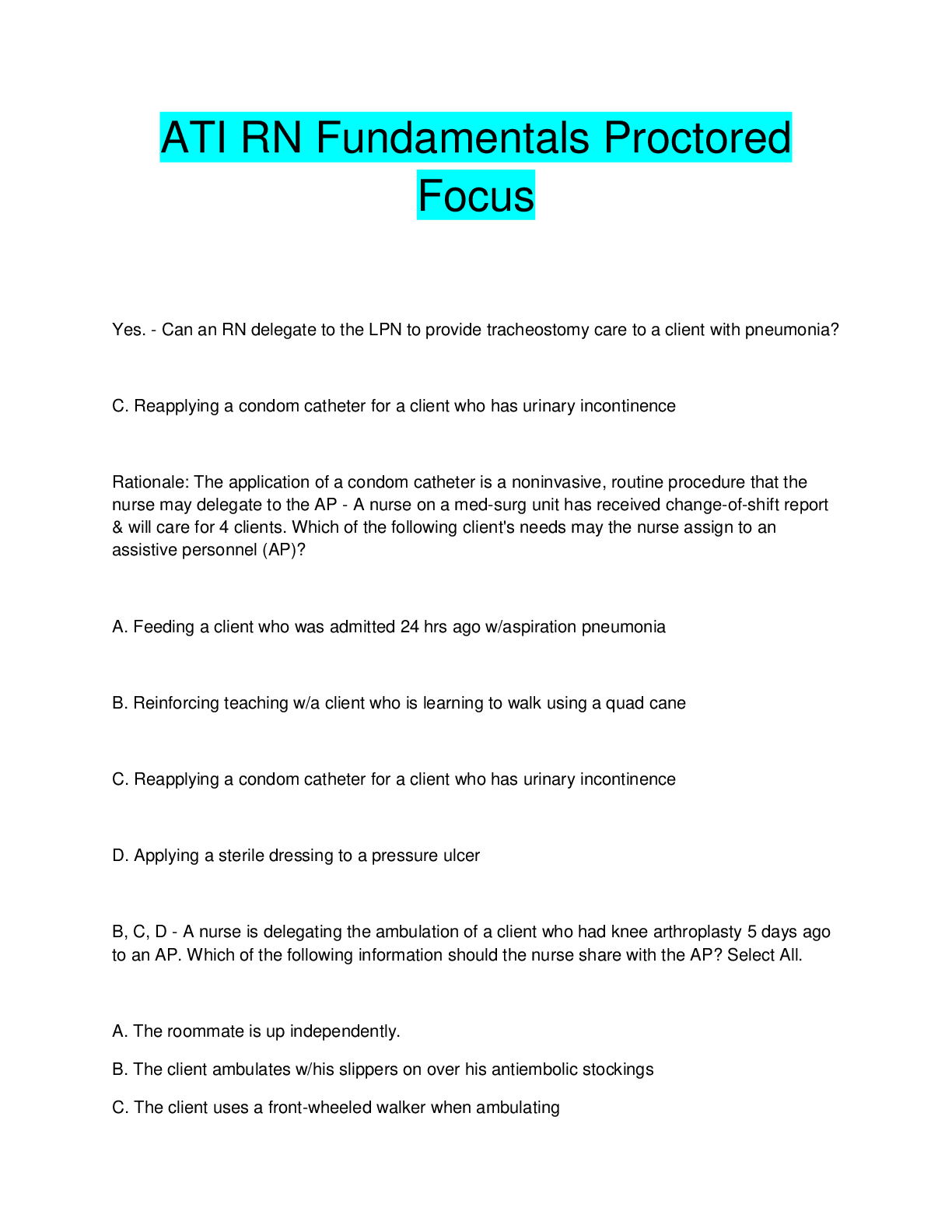
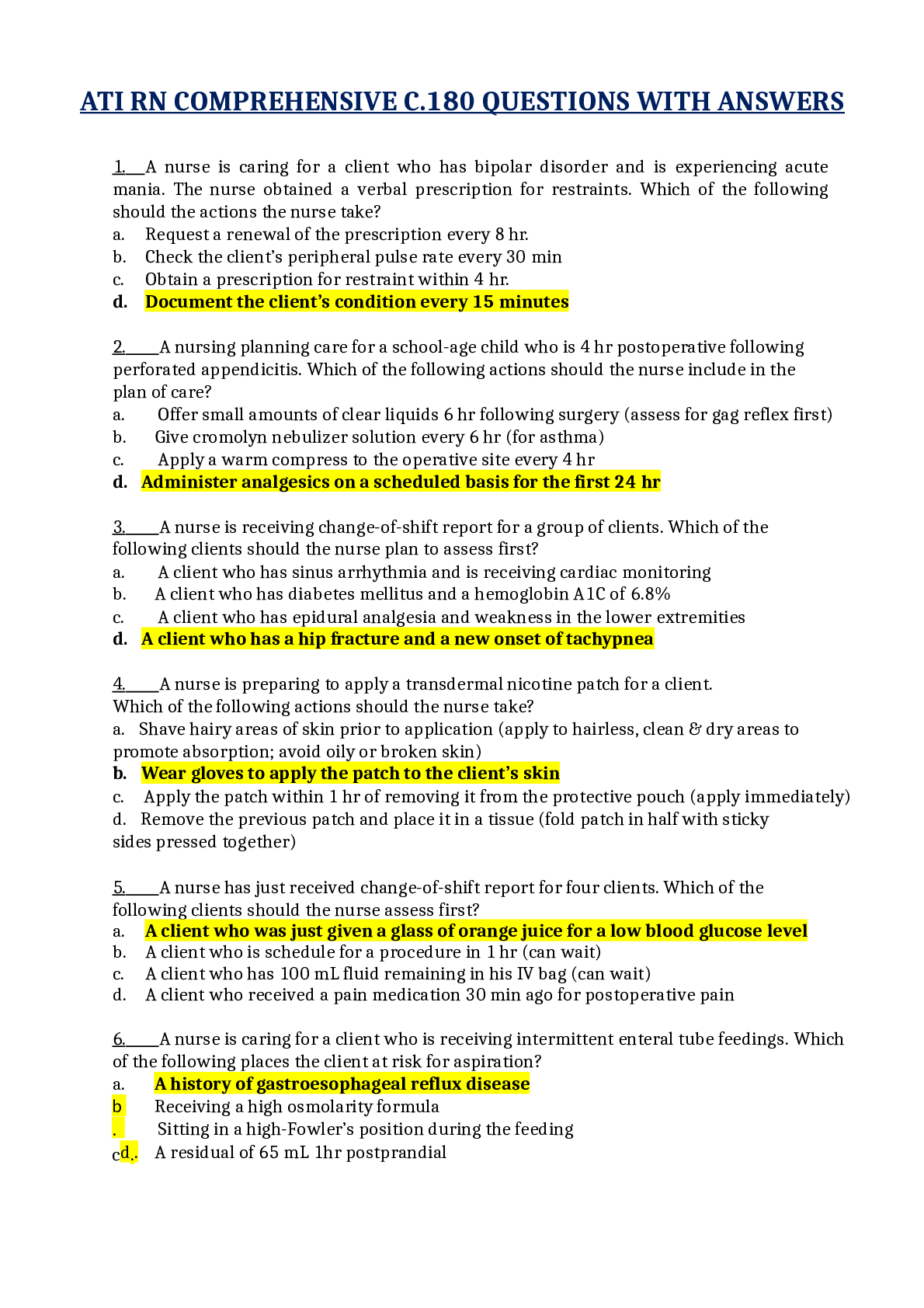
.png)
